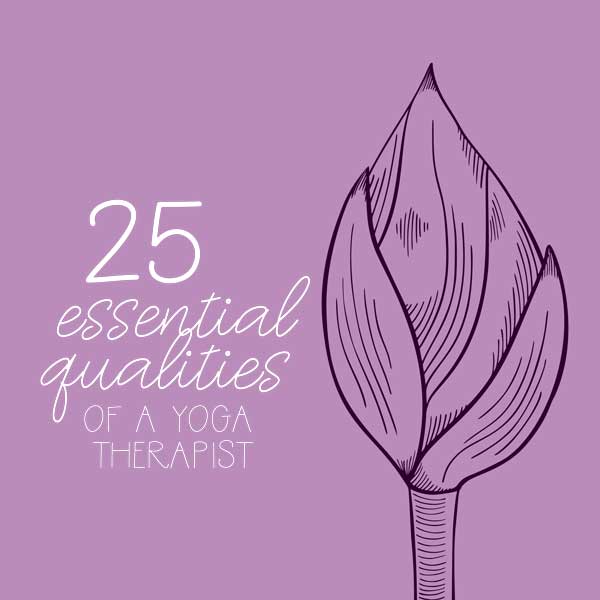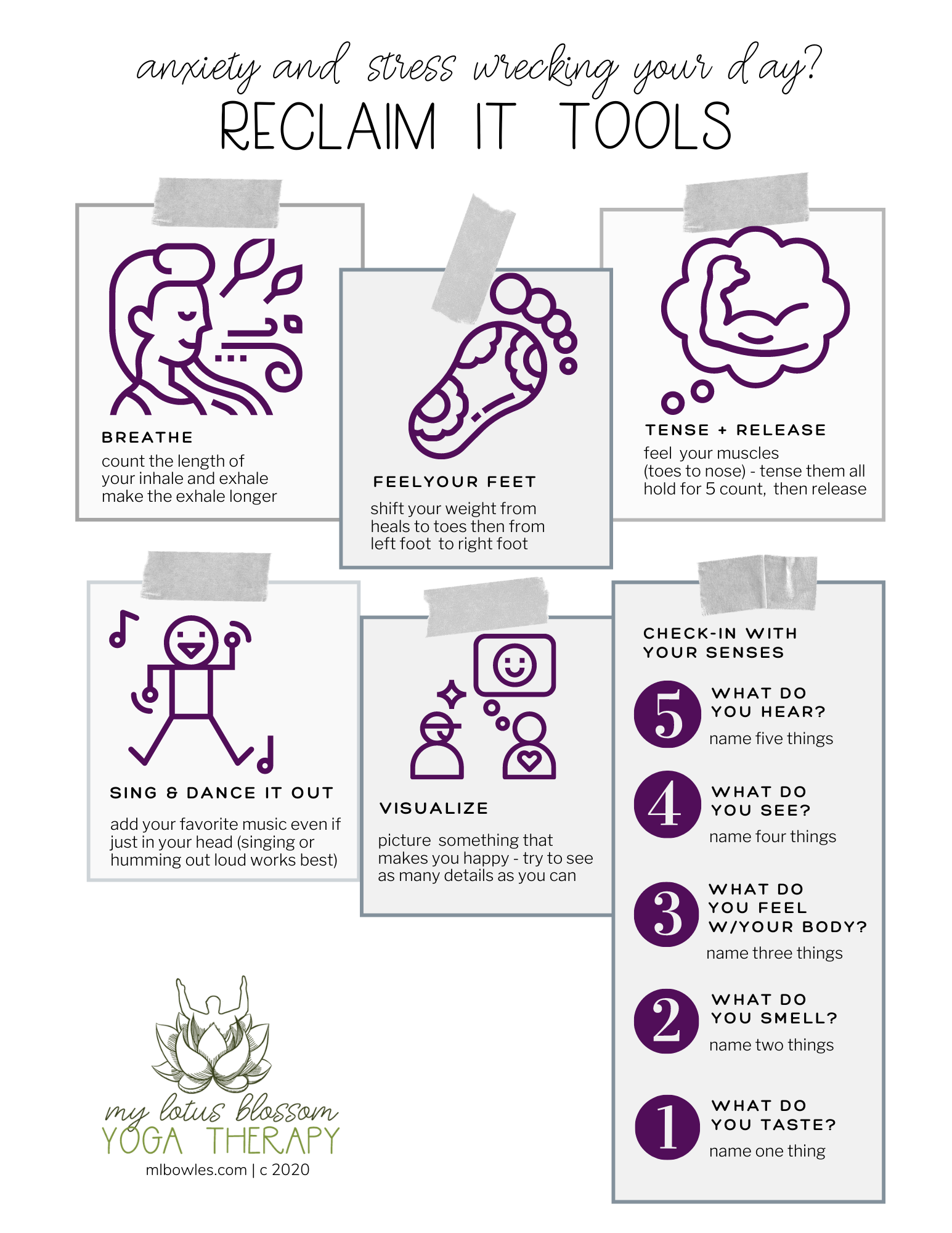My Lotus Blossom’s vision for quality yoga therapy
The vision of My Lotus Blossom Yoga Therapy is borne from the writings Joseph LePage:

Selfless Service: sevā.
The Yoga therapist receives a fair compensation for their professional services, but they also maintain an attitude of selfless service, a sense of a larger vision than their own personal sustenance.
Grounding: dṛḍha bhūmiḥ
The Yoga therapist cultivates a sense of grounding and stability at all levels of being. This begins at the level of the physical body where they develop the strength and stability to assist students and clients with poses easily. This grounding is also important at the psycho-emotional level so that any imbalance within clients or students can be met from a place of stability and centering.
Self-healing: svacikitsā
At all times, the therapist needs to uphold the inherent ability of all clients and students for self-healing. This self-healing process begins with the therapists themselves who learn to connect with the essence of healing within their own being, bringing that healing nectar into their own lives and also showing students and clients how to access it.
Body Awareness: kāya cetana
Awareness is the foundation of Yoga therapy and body awareness involves deepening our understanding and sensitivity of all five koshas. This enhanced awareness is therapeutic in itself and serves as the foundation for both evaluating a student’s needs and for choosing all of the appropriate Yoga tools and techniques.
Conscious Presence: upasthiti
Conscious presence is the ability to live in the present moment. Yoga Therapy takes place in the present moment with the therapist deeply aware of all that is happening both within themselves and within the client at all levels of being.
Careful Listening: śravaṇaṃ
In Integrative Yoga Therapy, the therapist very rarely offers advice or opinions, but rather learns to listen carefully and sensitively to what their students or client are thinking, feeling or saying. Our response is to affirm their feelings and needs, then respond to them with the appropriate Yoga methods, tools and techniques.
Skillful Speech: vāca kauśalaṃ
Individuals in a healing process are extremely sensitive, which is helpful in the sense that they are open to receive all that may be helpful for their unfolding. This also means that we need to exercise great care in the communication we choose and this usually means speaking as little as possible and allowing most of the information to come from the client or students. Simply echoing their thoughts, feelings and beliefs in a way that is authentic and heartfelt can be a deep form of healing.
Patience: sahana
The healing process unfolds in its own time and place and is unique to each individual. Healing cannot be rushed and, like the butterfly’s wings, must unfold as part of a process in which all of the earlier stages of gestation occur naturally. The therapist must be mindful to let this process unfold at the right pace, never rushing it forward in the name of achieving some result that could be temporary.
Enthusiasm: utsāha
The Yoga therapist must love what they do. There are many areas within Yoga therapy and it is essential for the therapist to focus on an area where they feel inspired and the work is meaningful. While the Yoga therapist must have a background in all dimensions of being, from structural to energetic to psycho-emotional to spiritual, it is also important to focus where one’s strengths and gifts lie, where one is most inspired, and this may evolve over time.
Tools and Techniques: upakaraṇā
The Yoga therapist requires a much wider range of tools and techniques than the Yoga teacher. These techniques need to address all levels of being from structural problems to psycho-spiritual challenges and obstacles. For example, the Yoga teacher may want to expand their knowledge to include a large number of Yoga postures, while the Yoga therapist would more appropriately have a solid understanding of all the basic poses with a wide variety of options for modifying them, including the wall, props, slings, restorative positions, chair yoga, etc.
Personal Practice: sādhanā
Especially in one-on-one sessions, the Yoga therapist will be guiding the client toward a personal practice because this is the only practice that can meet a student’s needs optimally in terms of using Yoga for health and healing. The best way for the therapist to learn to develop an optimal practice for others is to develop their own personal practice and to assess it carefully as to how it is meeting their needs at physical, energetic, psychoemotional and spiritual levels.
Study of Self and Texts: svādhyāya
The deepest healing that the Yoga therapist provides is facilitating students or a client in new and clear ways of seeing. This involves the ability to explore ourselves at all levels. The only way the therapist can guide this process authentically is by going through it themselves, looking at all areas of pain, obstruction or suffering in their lives and slowly but surely unraveling and revealing the core beliefs that underlie them.
Simplicity: saralatā
Whether working with groups or in individual sessions, there can be a tendency on the part of the Yoga therapist to include as many tools and techniques as possible, obviously with the intention of creating the greatest good. For effective Yoga therapy, however, less is usually more and using a few tools and techniques fully and authentically while taking the time to sense their effects and benefits completely is generally the most helpful.
Generosity: dāna
Generosity is an openness to share all of our knowledge, tools and techniques without possessiveness or grasping. Obviously, these tools need to be given at the right time, when the student is prepared, but knowledge of Yoga is universal and belongs to all of humanity to be shared freely, not to be dispensed grudgingly. Generosity is also an attitude of how we give our time to our students and clients, understanding that all we offer to the universe will be returned to us abundantly.
Compassion: karuṇa
In Yoga therapy, compassion is seeing clearly that everyone has encountered suffering along their life journey. For some, the pain has been more physical while for others, more psycho-emotional, and for some, even spiritual. Rather than seeing the client or group we’re working with as ill and ourselves as well, we recognize that all of us are on a healing journey and that we are all equal along this journey.
Witness Consciousness: sākṣitvaṃ
When working with those who are facing health challenges, the full range of feelings, emotions and sensations are likely to arise. These feelings also tend to trigger experiences within the Yoga therapist. The Yoga therapist needs to be aware of these feelings and, at the same time, not allow them to affect the work that is ongoing. To do this, we need to cultivate the art of witnessing, allowing all thoughts, feelings and beliefs to arise naturally without identifying with them so closely, especially while we are working. As we model the ability to witness consciously, clients and students will also cultivate this practice more easily.
Equanimity: samatva
Through witness consciousness, we gradually and naturally develop greater equanimity. Equanimity is like resting in the calm depths of the sea of our being no matter what is happening at the surface level of sensations, thoughts and feelings. Equanimity allows us to stay calm and centered no matter what is happening in our groups, private sessions or in our practice or career as a whole. With equanimity, we respond intelligently and flexibly at the surface level of our lives to meet both our own needs and those with whom we work. Even while participating in all of our daily activities, we never lose that connection to the calm depths of our deeper being.
Integrity: arjava
For the Yoga therapist, the essence of integrity is recognizing both our skills and our limitations. Yoga in itself is a large area of study and when combined with knowledge of health and wellness from a Western perspective, the field of Yoga therapy becomes vast. It is more appropriate to think of ourselves as Yoga therapists with a particular focus, such as the physical body or the energetic body, and to slowly develop skills and experience with different focus groups and individuals so that we have the ability to offer a service that has depth and integrity.
Integral Vision: pañca kośa darśana
The Yoga therapist needs to hold a vision of the whole person at all times in their work so that even if they’re focusing on postural alignment, they are seeing, sensing and responding to their students or client at the physical, energetic, psycho-emotional and spiritual levels. The synergy of working at all levels simultaneously is what makes Yoga therapy so powerful.
Sensitivity and Intuition: saṃvedanaśila ca nidhyāna
The Yoga therapist uses a methodology for assessing a student’s needs at all levels of being. The therapist must, however, also open to their own resources of intuition and inner listening through a knowing that they are a deep well of universal knowledge. This wisdom can arise as a sudden flash of insight as to what direction a Yoga therapy session should take and can then be evaluated within the overall plan and structure for a student’s development.
Creativity: pratibhā
Yoga therapy is both an art and a science, and with each group or individual we meet, we both learn and teach something in a completely new way. This openness to our practice as a field of infinite possibilities allows for tremendous creativity, keeping our teaching fresh and supporting our enthusiasm.
Vitality: jīvanaśakti
Anything we do in life requires health and vitality, but when we are offering support to those with health challenges, it is even more essential to nourish ourselves at all levels of being by maintaining our own practice, receiving our own healing therapies and also setting aside time for play and exploring life’s mysteries. As we live vitally, we are naturally able to support our students and clients in enhancing their own level of vitality.
Gratitude: kṛtajñā
Gratitude is welcoming and embracing life as a learning and a blessing. It is a sense that life is a gift and that each of us has an essential and intrinsic purpose and meaning. At the most fundamental level, the inability to accept and embrace life may be an important cause of dis-ease at all levels of being. As we open to life, everything becomes more workable, and through this, healing occurs naturally.
Lightness and Ease: laghubhāva
Through the integration of all the qualities of a Yoga therapist, we naturally and gradually transform and evolve so that we are able to live and work with lightness and ease in all of our activities, even those we find most challenging. We are able to embrace these challenges more easily because we know that we won’t be thrown off balance and that they will serve to cultivate even greater lightness and ease.
Surrender: praṇidhāna
Surrender is the recognition that there is an energy and intelligence at the heart of creation that guides everything and that our destiny is to align with this essence and to radiate its energy to all those we meet. As we attune to this energy, we are able to communicate it to our students and clients as the very essence of healing.
© 2013 Joseph Le Page Integrative Yoga Therapy
Follow On Social
Frequently asked questions
private sessions + public class offerings
All classes and private sessions, other than massage, are virtual unless otherwise indicated.



